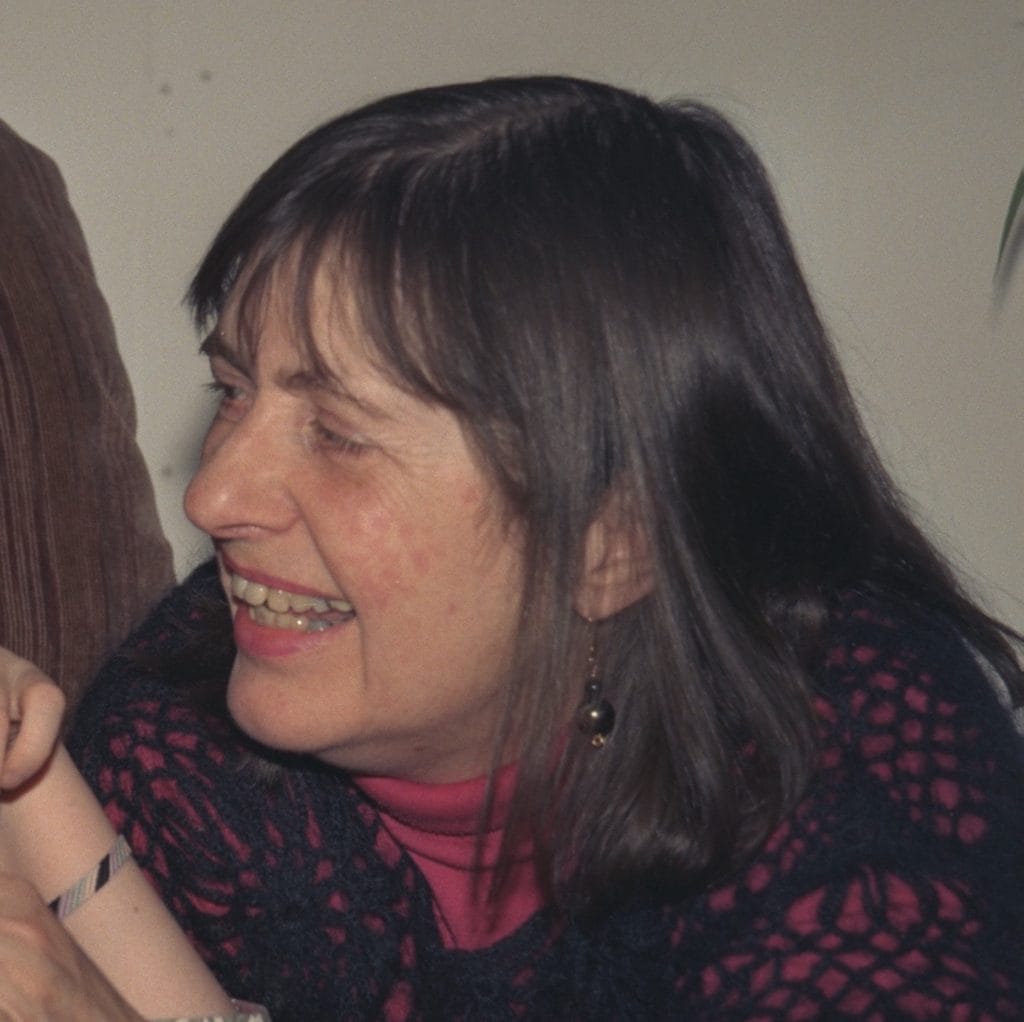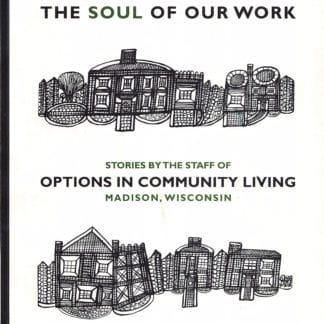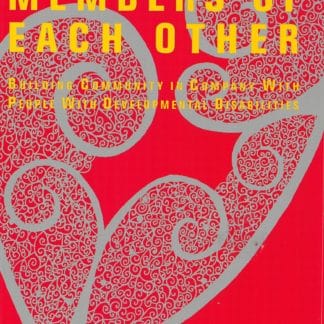
by Nicola Schaefer
(This article is a “teaser” for Yes, She Knows She’s There)
In a plane heading for Toronto, where I was to be part of a conference to do with the inclusion of people with disabilities in their own homes within typical neighbourhoods, I found myself talking, as one does on planes, with a fellow passenger. We were both middle-aged women with adult offspring. Ellen told me about hers and then it was my turn.
“My youngest, Ben, is a tree surgeon in England; next up is Dominic, who’s a freelance photographer in Vancouver, and my oldest, my daughter Kate, is a teacher in Winnipeg.”
“Oh yes,” said Ellen, “What does she teach?”
“She’s not a conventional teacher,” I said, “But I suppose one could say she teaches the art of growing invisible antennae.” Before Ellen’s baffled expression had time to become permanent I explained further. I told her what an interesting and complex woman my daughter is and how despite, or rather because of, the inconveniences with which she has to contend — including quadriplegia and lack of speech — she is indeed a brilliant, full-time (if unpaid) teacher to anyone willing to learn.
As her first student, I told Ellen, it took me a while to adapt to her teaching methods. There were no lecture notes to be taken, no essays to be written, no exercises to practice, no books (beyond the generic “Cerebral Palsy: How to Deal with your Wonky Kid” type) to study. There was, and still is, just this lovely person Iying or sitting around and challenging me to help her have a life.
Anyone unable to move much, or to communicate beyond body language, needs to have enormous patience when trying to get their point across. So too, of course, does the recipient of the information, so one of the first things I learned from Kate was to slow down when I was “listening”, and to try first one thing and then another, and an other, until I felt I had understood her. Consequently I also learned to watch her expression carefully to see what made her demonstrate different emotions. These emotions included amusement (the trigger for which might be me drop ping something on my foot and hopping around cursing, for example), alarm (the approach of a nurse with a needle or a baby brother looming over her with a Tonka truck), dreaminess or contentment (particular pieces or types of music, having a massage), interest (when she was young it was usually food but when she became a teenager this was superseded by hairy young men), irritation or disdain (being encouraged, sometimes of necessity forcefully, with the in take of fluids when she wanted simply to be left alone), and pure joy (the appearance of a favorite person, perhaps).
A major lesson I’ve learned in life with Kate is the importance of becoming an advocate on her behalf. Originally a shy person who accepted the status quo, I gradually realized that Kate had rights and needs that weren’t being addressed, and wouldn’t be unless I got together with the other parents and, with them, spoke up for our children. Back in the ’70s, when there was literally nothing to assist parents like myself and our children – integrated school, respite care and so on were but dreams – I remember saying to a friend, “I’m constantly putting up my hand at meetings, typing proposals, phoning bureaucrats; I’m becoming nothing more than an irritant.”
“Remember,” said my friend, “irritants create pearls” – referring, of course to the grain of sand in the oyster that is the beginning of the pearl. It was a good thought.
I reckon Kate also teaches philosophy and ethics. Had I not known her I don’t think I’d ever have appreciated my own life as keenly as I do. Nor would I have given as much thought to ethical questions about amniocentesis, abortion, the implications of the words “quality of life,” or the frightening knowledge that certain individuals are devalued. By her very being, she has encouraged me to ponder these is sues and has guided me in my thinking.
Everything Kate has taught me sprang from the same root – trying as far as possible to see and feel life from her point of view. What must it feel like to be stuck in a wheel chair half the time, to be unable to say, “l really fancy a plate of fish and chips and then a meander round the neighbourhood, now that spring is here”, to have little or no control over what is done to me or by whom, to be reliant on others for every aspect of my life? I’ve learned to be as empathetic as possible and to try to sense what’s going on in her head, in other words to grow invisible antennae.
During our conversation (I didn’t do all the talking!) Ellen told me how much she’d learned from her nephew, who had Down Syndrome. Later she asked me where Kate lived and what she did during the day. I described Kate’s living arrangement and then explained that because there was no suitable daytime occupation in Winnipeg for her when she reached school-leaving age, she stayed in the Multiply Handicapped class – or, as I preferred to call it, Room 107 at Gordon Bell High School until she was 23. Then, she and three other young women (including Diana Tureski, now also in SWES), spent a couple of years in Project Inclusion, an individually designed adult education program at Red River Community College. When a decrease in funding caused the demise of this initiative, I investigated daytime situations for adults with significant disabilities and decided that SWES, the one run by DASCH, would be best for Kate. Luckily, she was accepted and has been there ever since.
As we headed down to Toronto, I told Ellen that over the years I’ve often popped into SWES and have noticed with interest and appreciation the way it has developed and adhered increasingly to it’s mandate of regarding participants and individuals, each with their own specific contributions to make and needs to be met. I also find it immensely gratifying that, almost without exception, the people working in SWES have proved to be among Kate’s most exemplary students. First, they take a real interest in Kate as a person and her methods of communicating. Second, they have learned adapt to her specific and complex needs. And third, I can rely on them to advocate for Kate when necessary. I stressed to Ellen that these good staff people take a similar interest in all the participants in SWES, and I’m sure have been as open to learning from them as they have from Kate. I think they would agree that Kate and company are extraordinary teachers.



